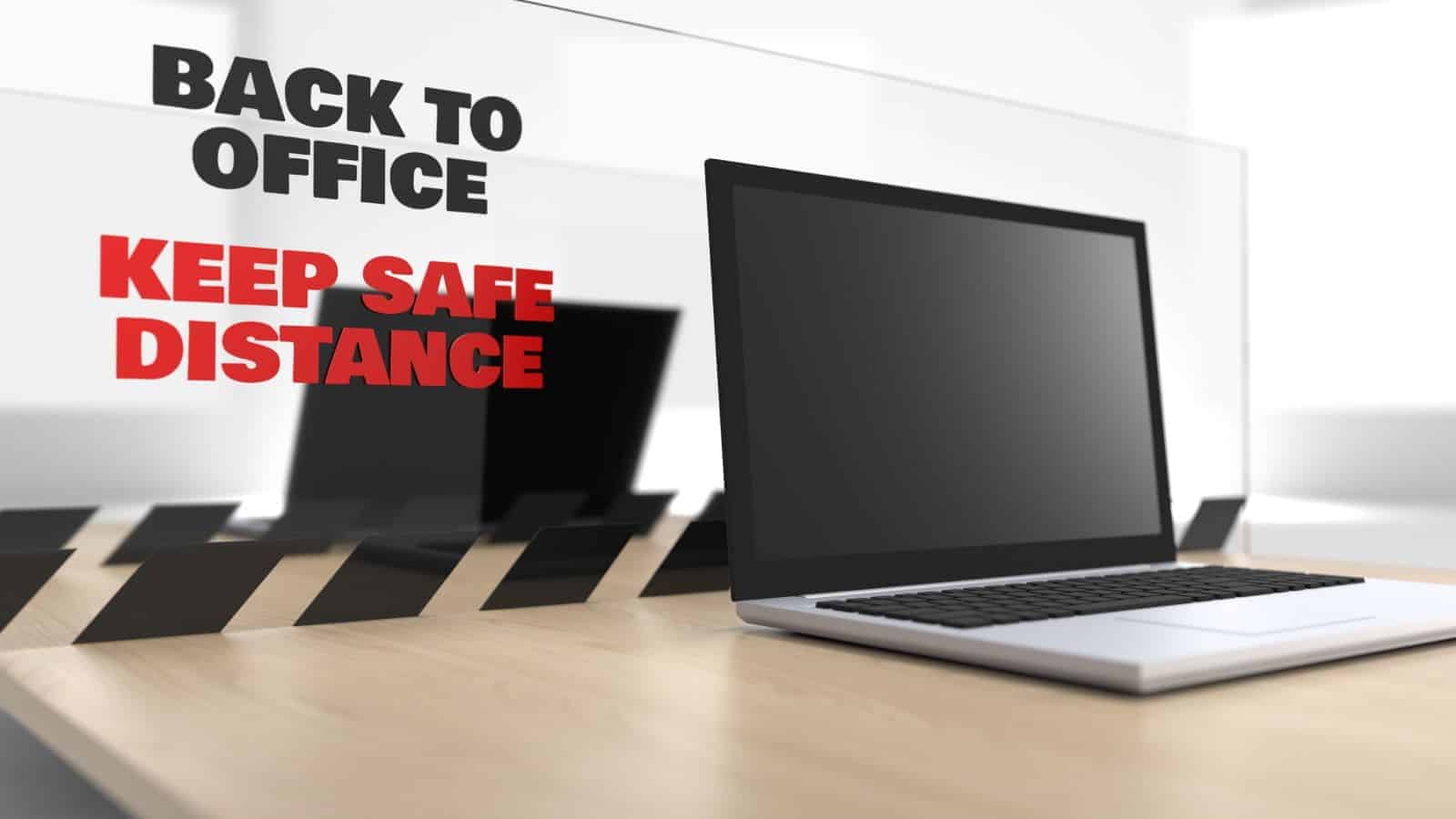Socialization has always been a critical element in corporate culture. On your job, you probably enjoy chatting with your coworkers over a cup of coffee in the break room. Sharing a tidbit of gossip at the water fountain at work is also a classic example of employee camaraderie–and often part of company culture.
It’s Impossible to Have a Germ-Free Environment
Unless you work from home, it’s nearly impossible not to rub elbows with others a couple of times a day. However, proximity can spread germs and viruses exponentially, and therefore company culture must change. If one of your coworkers has the flu, he could easily share it with you and others by coughing, sneezing, or leaving germs on shared surfaces, like doorknobs and phones.
You already know how to keep your germs to yourself when you are ill. Actions such as washing your hands, covering your mouth when coughing or sneezing, and keeping your distance from others are common sense. The best advice is to stay at home if you are down with something contagious.
Did you know that when you sneeze, you can expel as many as 40,000 microscopic particles up to 100 meters per second, and a cough can propel up to 3,000 droplets? If you also spray particles in the air when you talk, it is bound to reach those around you.
If you expel tiny particles up to 100 meters in a second, it would be the equivalent of one and a half football fields. In our Western culture, we tend to keep a personal space of about 2-3 feet from others. Even if we sneeze or cough inside our elbow or a tissue, others on your job could still be affected.
Understanding Presenteeism
It’s easy to assume that people who are sick will stay home until they are better. However, regulations vary by employer, and the solution to contagious employees isn’t that simple. Because of presenteeism, you may be seeing subtle changes in company culture around the nation.
Presenteeism is a newly coined word for those who are sick and decide to come to work anyway. Some of the reasons why suffering people come to work are they have inconsiderate employers, strict absence policies, no sick pay, or job loyalty. While these sick employees may think they are responsible, they are negligent by risking their coworkers’ health.
How can you go to work with the absurdity that someone isn’t going to share their sick germs? Will your company culture limit communication to smartphones and video conferencing? Here are ten ways that social distancing might affect your company culture and ways you can deal with the changes.
10 Changes Many Workers Will Witness in Their Company Culture
1. Closed Cubicles
Most large corporations have already changed to personal cubicle floor plans. Entry-level and middle management usually occupy rows of cubicles, while senior management generally has the traditional corner office space with a view. If this is the arrangement for your workspace, you are probably used to moderate social distancing already.
Closed cubicles may become the norm to protect employees, management, and clients’ well-being. Everyone may work in a plexiglass cubicle, with one person at a time permitted to enter. You would have a desk, and the other person would sit a few feet away from you.
You needn’t feel caged in a while working in a closed cubicle. Make good use of all the natural light you can and fix up your area to be warm, professional, and inviting. If you have a business to discuss with a coworker, try to do it in person rather than over the phone. Just makes sure you are at least six feet apart.
2. Limited In-Person Meetings
Remember watching George Jetson talk to his boss over a computer monitor? What was once amusing science fiction has been a reality for several years now. Video conferencing allows companies to meet with coworkers and clients all over the world in real-time. This technology saves money and time and will enable people to be in virtual meetings no matter where they are.
Video conferencing may replace most in-person meetings due to social distancing and convenience. Connect from a spot that is professional, yet friendly, for that touch of human warmth. If appropriate, a little humor goes a long way in these sterile-like meetings.
3. Regrouping Social Gatherings for Your Company
Traditionally, most companies have sponsored holiday parties and special occasions to keep high employee morale. Haven’t you attended parties at work for promotions, weddings, and baby showers over the years? These events are what often make coworkers feel like close friends and even family.
If social distancing issues prohibit office gatherings for a while, take heart. You can always gather in a public place or invite coworkers to your house. Even if you must leave a small cake and balloons in the honoree’s cubicle, you have shared your thoughts and kindness in some small way.
4. Breaks and Lunch at Your Desk
Every company has a break room or a shared kitchen where employees can rest, chat, and eat. What would an office do without the perennial box of stale donuts and burned coffee? Some of your best times at work may have been sitting around the break table laughing and blowing off steam.
If your workplace no longer offers an employee lounge or kitchen, consider keeping a minifridge in your cubicle for snacks, drinks, and meals. Personal size coffee makers don’t take a lot of space and are quite affordable.
5. Drinking Fountains and Coffee Pot Removals
One thing that will probably go is public drinking fountains and coffee pots. You will be encouraged to bring drinks to work. A public drinking fountain is one of the dirtiest places in the office. Did you know that you can catch E. coli and coliform from those commonly used fountains?
A study was conducted on various school fountains around the country. They found that there was an average of 2.7 million types of bacteria on these drinking stations. No wonder they are keeping these closed off as bottled water is much safer.
6. Staggering Work Shifts
To keep fewer people in the office, your company may rotate schedules so that some employees work from home on varying days. You may go to a plan where you work two days at home and three days at the office or vice versa. Consequently, on the days when you are home, other people will be in the office.
It sounds like a big hassle, but one of the advantages of working from home is that you might not have to fight the traffic and other daily commute issues. If you’ve always wanted to try telecommuting, then it might be your chance as corporate culture is changing.
7. Temperature Checks
One of the downsides to social distancing is ensuring that every employee that comes to work is healthy enough to be there. You may be required to have routine temperature checks and answer a few questions about your health each day.
The goal is to ensure that you are not carrying a fever that could infect others. So a simple temperature check may be all it takes to prove that you’re not harboring an illness. Your company culture may now include temperature evaluations before you begin for the day.
8. Hand Washing
Another change that you will see in your corporate culture is an increased awareness to wash your hands and sanitize. You may see signs all around the building and in the restroom, reminding you of the importance of a good scrub.
Many people don’t wash their hands properly or don’t wash them at all after leaving the bathroom. It’s vital that you wash continuously throughout the day, even if you haven’t used the restroom. If you touch your face at your desk, then use sanitizer. It’s just another way to keep germs at bay and avoid any further changes to company culture.
9. One Way Traffic Patterns
Grocery stores and workplaces across the globe are going to one-way traffic patterns. While this won’t cause much of a problem to smaller offices, it may be a considerable shift in your company culture. You will be restricted to the places you can go and the flow of traffic down that aisle.
10. Wearing Masks
Whether you think they are essential or not, many companies are requiring their employees to wear masks. The best cover to use is an N95 that has capabilities to block every toxin you may breathe, but the homemade varieties are better than nothing.
If you opt for a cloth mask, make sure that you cannot smell anything through it. Also, it should comfortably cover your nose and mouth. While your glasses may fog up and you may feel as if you are suffocating, it’s a lot better than being on a ventilator from contracting a deadly virus.
 Final Thoughts on Learning About the New Company Culture
Final Thoughts on Learning About the New Company Culture
A few small inconveniences are worth your health. Each employer will evaluate the space, the number of employees, and mandates that they feel are necessary for their operation. Cooperation is the key, or it could cost you in terms of wellness.



















